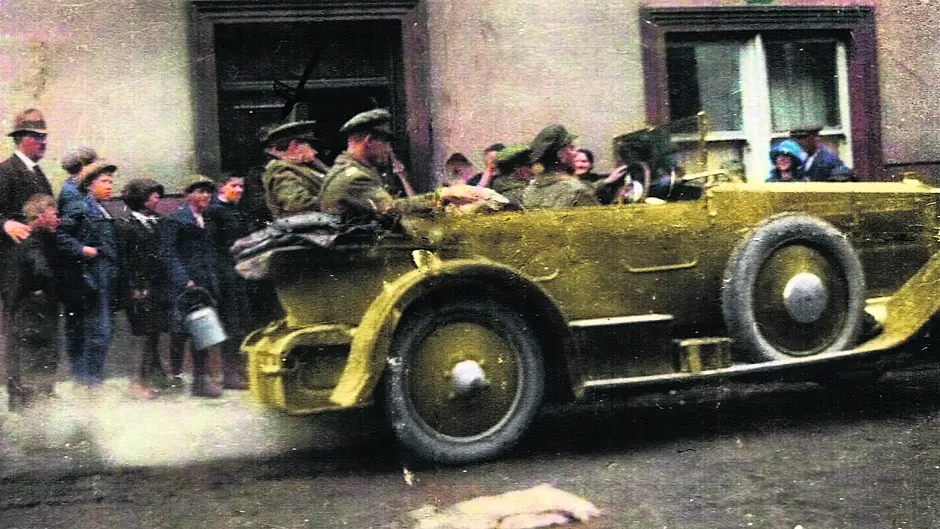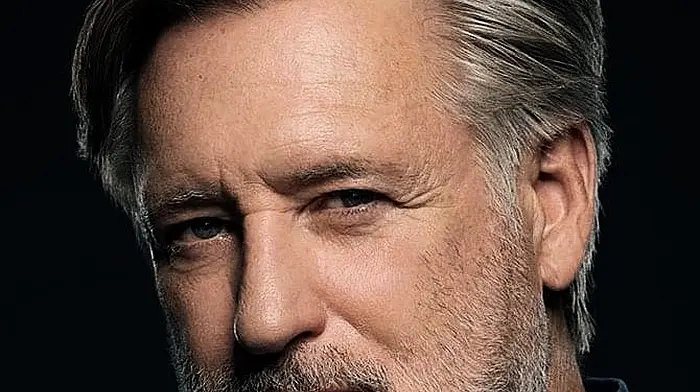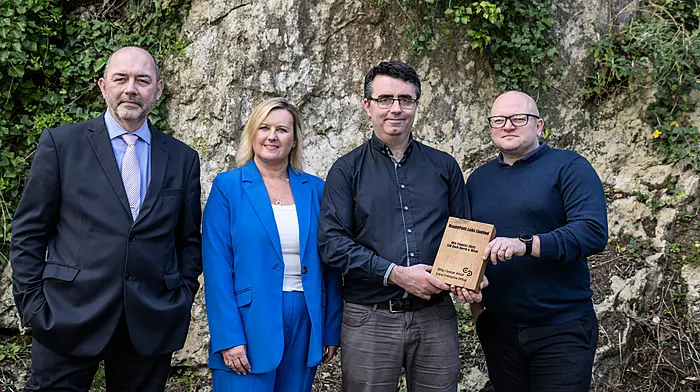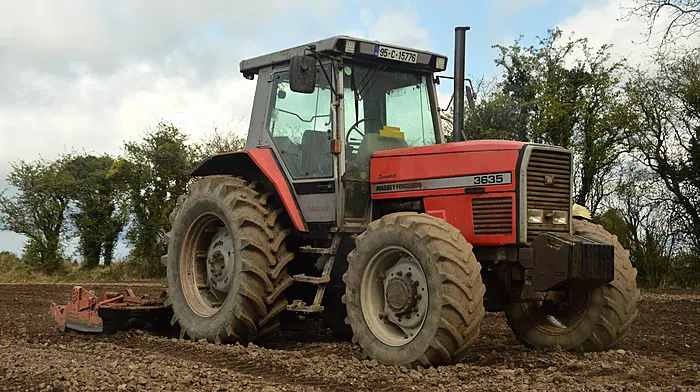Letters to newspapers, including this one, prompted historian and author Meda Ryan to revisit her book on what is regarded by some as the greatest mystery of Ireland’s Civil War – who shot Michael Collins?
WHILE much is known of the situation that brought Michael Collins, commander-in-chief of the National Forces, to his death at Béal na Bláth 100 years ago, the actual identity of the man who fired the fatal shot has remained unanswered – until now.
Collins decided to go on an inspection tour of military forces in barracks, in Cork and West Cork in particular. He had travelled in a convoy from Dublin to National Forces Headquarters in Cork’s Imperial Hotel on August 20th 1922 without any disruption, despite the Civil War being in progress.
Since his death there has been no shortage of speculation, theories, debates, books and articles written on the ambush. However, these have never satisfactorily closed the case.
But in the research for the revised edition of my book The Day Michael Collins Was Shot, I believe I have answered that question – and proved the answer beyond doubt.
My interest in this story probably spans from the fact that I grew up in the area. My people were involved in the republican movement and from an early age, I was aware of debates surrounding the death of Collins. It was always at the back of my mind that I should try to solve this mystery.
While working on what I had planned to be a book on the War of Independence in West Cork, I interviewed a man named Neilius Flynn, in whose house some of the Hales family stayed after their house was burned. He confessed to knowing ‘a republican’ who had participated in the Béal na Bláth ambush. Flynn wasn’t sure if this man would grant an interview. ‘I’ll let you know, next time you call,’ he said.
That man who, after some persuasion, agreed to give his version of the story, was Jim Kearney. I became determined to continue investigating the death of Michael Collins and abandon my original intention of writing a book on guerrilla activities in West Cork. I have interviewed many of the ambush participants, helped by the fact that they trusted me. This brought the story to life for me and, I hope, for my readers.
I am the only person who spoke to participants (primary sources) on both sides – National Forces (pro-Treaty) and Republicans (anti-Treaty) – in the ambush. I am the only person who interviewed the doctors (most of whom later lived in England) who examined Michael Collins’ body. I have analysed the event, the theories, and backed up my argument with facts. I heard how he was shot, and who shot him.
The Béal na Bláth ambush was not fought – as had been planned – in the morning after de Valera had left. Due to the lateness of the evening, the ambush had been called off. Most Republicans had dispersed, so a few were left to undo the mine and cable and also remove the barricade. Some of these were forced to take on Collins’ convoy when the sound of approaching vehicles was sprung on them.
Tom Kelleher, north on the road close to the bridge nearest the Crookstown direction, heard the sound of vehicles and looked around. Believing that Tom Hales was trapped, he yelled to Jim Hurley, his comrade, ‘Better fire a few shots! Hales is at the barricade, he’ll be destroyed!’
John Callaghan, Timmie Sullivan and Jim Kearney, three engineers, had begun to walk towards the bridge nearest Bandon. They had disconnected the mine and the cable when the sound of vehicles approaching rang out. ‘Whist! They’re coming!’ shouted Callaghan. They ran, darted over the bridge, round the bend and took up positions on the bóithrín overlooking the road.
‘Drive like hell!’, shouted Dalton to the driver of the touring car carrying Collins. ‘Stop! We’ll fight them!’ retorted Collins. Immediately the order was obeyed.
Following the publication of my original book The Day Michael Collins Was Shot in 1989, there were numerous letters to newspapers, many of them saying that Jim Kearney was not an ambush participant.
Also, over the years, writers have denied that he was there and could not find any proof that he was an ambush participant. Yet from my research I believe he was one of the principal men (a trained engineer) engaged in the ambush, especially at the later stages when the actual ambush took place, and not the prepared ambush where he and the men awaited the anticipated convoy throughout the day. Jim Kearney was a member of the 3rd Brigade.
Due to this denial, I found it necessary to write a special chapter on Jim Kearney for the updated edition, using many of his letters to me and to newspapers, and especially to The Southern Star. I have as far as possible allowed the letters and statements speak for themselves. Initially, following publication, I was reluctant to write letters to the newspapers to defend him, but found that some replies required such a response.
My years of research, travel and the accumulation of replies to questionnaires from men such as Emmett Dalton, Jim Kearney, Ernest Blythe and many participants are distilled into the book.
• Historian Meda Ryan is the author of several books including The Day Michael Collins Was Shot (Poolbeg); Tom Barry: IRA Freedom Fighter (Mercier); Liam Lynch: The Real Chief (Mercier); Michael Collins and The Women Who Spied For Ireland (Mercier) and 16Lives:Thomas Kent (O’Brien Press).








